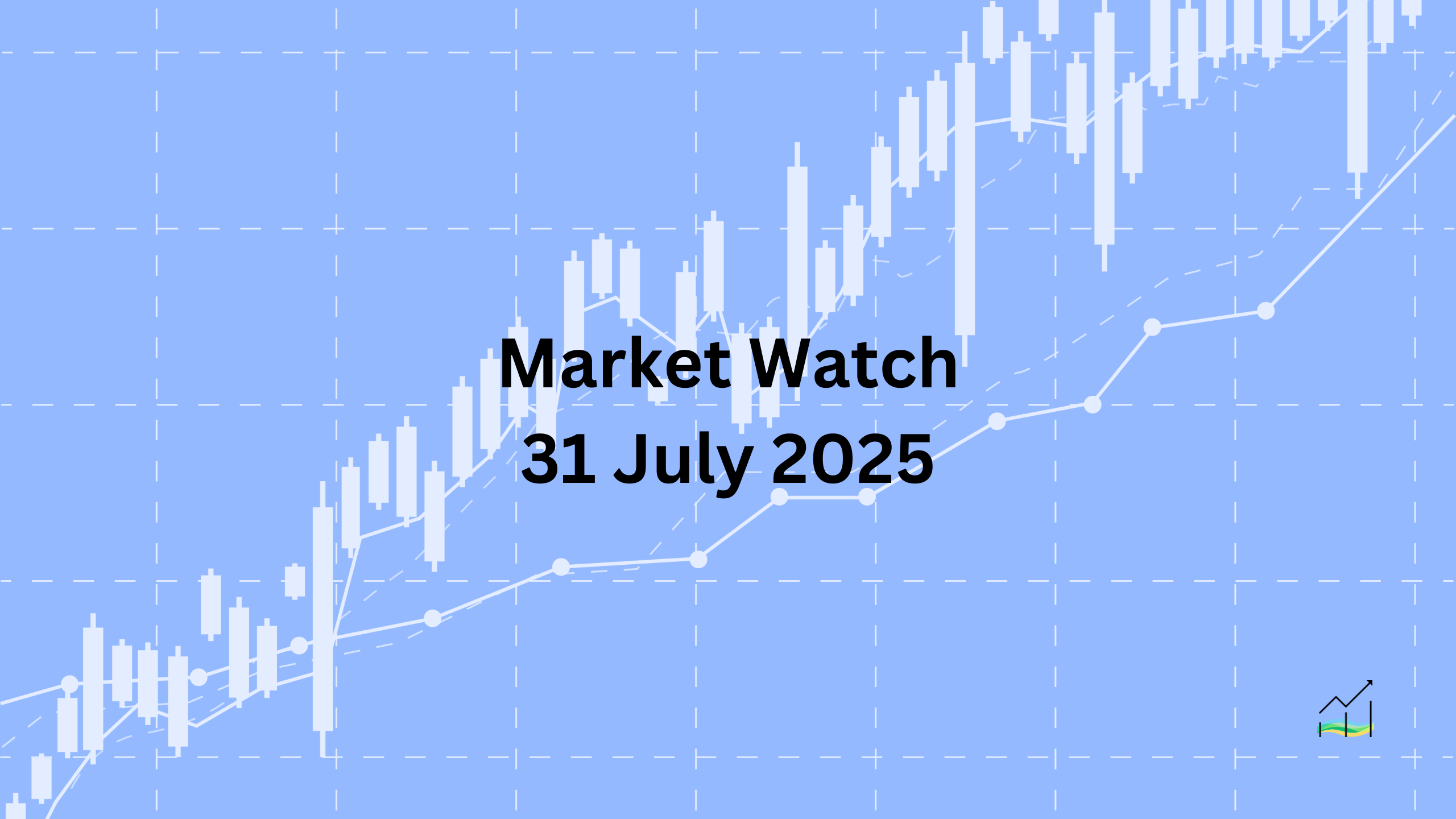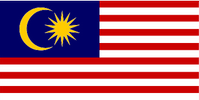31/07/2025 Market Watch

Fed Holds Firm, Markets React to Tariffs
Key Takeaways:
- The dollar surged on hawkish Fed sentiment despite two dovish dissents.
- New US tariffs announced by President Trump add to trade uncertainty.
- Yen remains the weakest G10 currency despite strong Japanese data and BOJ inaction.
- Asian equities fell on disappointing PMI data, while US futures rise on strong tech earnings.
- Gold rebounded after its sharpest one-day drop in a month.
The dollar rallied sharply after the Federal Reserve maintained its policy stance, a move that the market interpreted as a hawkish hold despite two dovish dissents from Fed governors. Fed Chair Jerome Powell highlighted downside risks more than upside risks, but the limited pullback in the dollar today suggests the current consolidation is only a pause in the short covering rally that began earlier this month.
Adding to the market’s focus, President Trump announced several new tariff schedules ahead of the August 1 deadline, while arguments challenging the legality of reciprocal tariffs are set to be heard today. Despite stronger-than-expected Japanese economic data, the yen has become the weakest performer in the G10, with the Bank of Japan leaving policy unchanged. The dollar is now trading above its 200-day moving average for the first time since mid-February.
In the equity space, Asian markets outside Japan and Taiwan declined, with Hong Kong and China mainland indices leading losses of over 1% each, weighed down by disappointing PMI figures. European equities are trading slightly lower, while strong earnings from Microsoft and Meta are boosting US index futures, with Nasdaq futures up 1.3% and S&P 500 futures higher by nearly 1%.
In commodities, gold rebounded after yesterday’s 1.5% drop, its largest decline in a month, climbing around 1% to reclaim $3,300. Meanwhile, September WTI crude is consolidating near $69.40 after hitting a monthly high of $70.50 yesterday.
United States of America
Overview
The Dollar Index extended its rally to nearly 100.00 yesterday, its strongest level since late May, closing above 99.50 and maintaining strength after a sharp move higher. This marks only the second time this year it has settled above its upper Bollinger Band, with the first instance occurring on May 12. The next technical target appears to be near 100.60.
Despite two dissenting Fed governors who favored a more dovish stance, the market interpreted the Federal Reserve’s decision to hold rates as hawkish. US Treasury yields rose while equity markets sold off, reinforcing the dollar's momentum. The shift in rate expectations was also notable: at Tuesday’s settlement, markets had priced in roughly 17.5 basis points of easing, which fell to just under 12 basis points by yesterday’s close.
Economic data has been mixed but supportive of the Fed’s cautious stance. June personal income and consumption data, included in the GDP report, drew some attention, although CPI and PPI figures remain the key inflation indicators for the Fed. Policymakers will also see the July and August series before their next meeting. Looking ahead, the Jackson Hole Symposium (21-23 August) will focus on labor markets, which are likely to be central to policy discussions.
Labor market data remains resilient. Weekly initial jobless claims have fallen for six consecutive weeks, although a slight uptick is expected this week. The quarterly Employment Cost Index is forecast to rise by 0.8% following a 0.9% increase in Q1. Tomorrow’s national employment report will be critical in shaping market expectations.
Meanwhile, legal challenges to the tariffs imposed under "emergency" powers continue. The appellate court will hear arguments on whether these measures represent executive overreach. Regardless of the ruling, the case is expected to be appealed further, leaving trade uncertainty in place.
Economic Drivers
- Hawkish market interpretation of the Fed's rate hold despite two dovish dissents.
- US Treasury yields rising as rate cut expectations ease.
- June personal income and consumption data included in GDP report.
- Focus on upcoming Jackson Hole Symposium, with labor markets as a key topic.
- Ongoing legal battle over the executive authority used to impose tariffs.
Data and Events
- 31 July 2025: Federal Funds Rate.
- 31 July 2025: FOMC Statement.
- 31 July 2025: FOMC Press Conference.
- 31 July 2025: Core PCE Price Index.
- 31 July 2025: Employment Cost Index.
- 31 July 2025: Unemployment Claims.
Price Action
- Dollar Index consolidating above 99.50 after rallying near 100.00.
- Technical target for the Dollar Index seen near 100.60.
- Strength above the upper Bollinger Band signals ongoing bullish momentum.
Key Points:
- Dollar Index holds near its strongest level since late May.
- Fed’s hawkish hold fuels higher US yields and supports the dollar.
- Markets reduce rate cut pricing ahead of key labor data.
- Tariff dispute remains unresolved with court arguments underway.
- Jackson Hole Symposium expected to provide further policy guidance.
Australia
Overview
The Australian dollar declined for a fifth consecutive session yesterday, extending a downtrend that began last Thursday after it failed to hold its yearly high near $0.6625. It briefly fell to around $0.6425, its lowest level since June 23, before recovering toward $0.6475 today and stabilizing near $0.6450 in late European morning trading.
Despite the recent weakness, Australia’s latest data releases showed broad economic resilience. Building approvals surged 11.9% in June, far exceeding expectations of 1.8% and marking a second straight monthly increase following three consecutive declines. Retail sales also posted a strong 1.2% rise in June, triple the forecast, while inflation-adjusted retail sales grew 0.3% in Q2, up from a revised 0.1% gain in Q1. Private sector credit expanded by 0.6%, in line with this year’s average pace.
However, import and export price indices fell in Q2, with export prices dropping 4.5% after a 2.1% increase in Q1, while import prices slipped 0.8% after a 3.3% gain in the previous quarter. These price trends, combined with the market’s conviction that the Reserve Bank of Australia will deliver a third consecutive quarter-point rate cut on August 12, continue to weigh on the currency.
Economic Drivers
- Market expectations for a third consecutive rate cut by the RBA on August 12.
- Strong June data: building approvals up 11.9% and retail sales up 1.2%.
- Inflation-adjusted retail sales growth of 0.3% in Q2 after 0.1% in Q1.
- Stable private sector credit growth at 0.6%.
- Decline in Q2 trade prices: export prices down 4.5% and import prices down 0.8%.
Data and Events
- 31 July 2025: Retail Sales.
Price Action
- AUD/USD declined for five consecutive sessions, falling from $0.6625 to $0.6425 before stabilizing near $0.6450.
- Nearby support seen around $0.6400 and the 200-day moving average at approximately $0.6390.
Key Points:
- AUD extends losing streak to five sessions.
- Market confident in an upcoming RBA rate cut.
- Strong building approvals and retail sales offset by falling trade prices.
- AUD remains near key technical support levels.
- Currency under pressure despite positive domestic data.
Canada
Overview
The US dollar extended its rally against the Canadian dollar for a fifth consecutive session, marking its longest advance since late February. It broke and settled above CAD1.38 for the first time since the end of May, reaching a high of CAD1.3845. Following a shallow pullback to CAD1.3815, the US dollar is once again testing recent highs, with little on the charts to prevent a move toward CAD1.3900.
The Bank of Canada left its policy rate unchanged at 2.75%, while the swaps market trimmed the probability of another rate cut later this year to 62% from 66% previously. The central bank’s updated forecasts highlight significant economic concerns. It projects a 1.5% annualized contraction in Q2, a steeper decline than markets had anticipated, followed by a modest 1% rebound in Q3. For 2025, growth is now expected at 1.3%, with 2026 growth forecast at 1.1%, down from 1.8% previously projected in January.
The Bank of Canada’s assumptions include a 25% US tariff rate applied to non-USMCA exempt goods, along with continued tariffs on steel, aluminum, and vehicles containing non-US content. Canada’s retaliatory tariffs are also expected to remain in place. The central bank has indicated that it is prepared to cut rates again if economic weakness further pressures inflation.
Economic Drivers
- Bank of Canada holds policy rate at 2.75%.
- Swaps market trims probability of another rate cut this year to 62%.
- Q2 GDP projected to contract 1.5%, followed by a 1% rebound in Q3.
- Growth downgraded to 1.3% in 2025 and 1.1% in 2026, from 1.8% in January.
- US tariffs of 25% on non-USMCA goods, and continued tariffs on steel, aluminum, and non-US content vehicles, alongside Canadian retaliatory measures.
- Bank of Canada maintains readiness to cut rates if economic conditions worsen.
Data and Events
- 31 July 2025: GDP.
Price Action
- USD/CAD rose for five straight sessions, settling above CAD1.38 for the first time since May.
- High of CAD1.3845 tested, with potential to move toward CAD1.3900.
- Shallow pullback to CAD1.3815 before resuming upward momentum.
Key Points:
- USD/CAD posts its longest rally since late February.
- Bank of Canada holds rates steady at 2.75%.
- Growth outlook downgraded amid trade-related pressures.
- Tariffs expected to remain in place on both sides.
- Potential for further rate cuts if inflation risks persist.
China
Overview
The US dollar recorded its strongest gain against the yuan since April, rising by approximately 0.45% and closing above CNH7.21 for the first time since early June. It briefly reached CNH7.2145 before consolidating between CNH7.1960 and CNH7.2115. The next significant level to watch is between CNH7.2240 and CNH7.2265, although further gains largely depend on broader US dollar movements.
The People’s Bank of China (PBOC) set the dollar's reference rate at CNY7.1494, compared with CNY7.1441 the previous day. The recent widening of the absolute value of daily fix changes, now at 0.30% over the past four sessions, reflects a shift from the tighter levels seen earlier in the year. Despite this, implied three-month yuan volatility has fallen to 3.6%, its lowest since July 2024.
China's latest economic data was softer than expected. The manufacturing PMI fell to 49.3 from 49.7, remaining in contraction for the fourth straight month, while the non-manufacturing PMI slipped to 50.1 from 50.5. The composite PMI, which measures overall output, eased to 50.2 from 50.7, breaking its two-month improving trend. These readings suggest limited momentum in both industrial and service sectors.
Economic Drivers
- US dollar strengthens against yuan, closing above CNH7.21 for the first time since June.
- PBOC fixes USD/CNY at CNY7.1494, slightly higher than the prior day.
- Widening of daily fix adjustments to 0.30% from 0.27% the previous week.
- Implied three-month yuan volatility falls to 3.6%, its lowest since July 2024.
- Manufacturing PMI drops to 49.3, remaining in contraction.
- Non-manufacturing PMI slips to 50.1, while composite PMI eases to 50.2, indicating softer overall growth.
Data and Events
- 31 July 2025: Manufacturing PMI.
- 31 July 2025: Non-Manufacturing PMI.
Price Action
- USD/CNH posts its largest daily gain since April, settling above CNH7.21.
- Immediate support around CNH7.1960, with resistance near CNH7.2240-7.2265.
- Pair consolidating after sharp advance.
Key Points:
- Dollar gains 0.45% against the yuan, closing above CNH7.21.
- PBOC widens daily fix adjustments, signaling greater flexibility.
- Yuan volatility drops to its lowest since July 2024.
- Manufacturing PMI remains in contraction for the fourth month.
- Broad dollar strength likely to drive further moves.
Europe
Overview
The euro extended its decline, breaking through the June 23 low near $1.1455 and dropping to nearly $1.1400 during Federal Reserve Chair Powell's press conference. While the currency is holding today, its recovery stalled near $1.1460. The next technical target could be around $1.1340, which was the early June low. The euro also closed below its lower Bollinger Band near $1.1515 for the third time this year. Historically, the currency has shown a tendency to recover the day after such breaks, although yesterday’s bounce above $1.1500 faced heavy selling pressure.
Eurozone Q2 GDP growth came in at 0.1%, shifting the market’s focus toward inflation data. Spain's EU-harmonized CPI dropped by 0.4% on the month, but the base effect pushed the annual rate higher to 2.7% from 2.3%. France reported a 0.3% monthly increase, resulting in an annual rate of 0.9%. Italian inflation followed its usual seasonal pattern, falling 1.0% month-over-month, the largest decline since last July, bringing the annual rate down to 1.7% from 1.8%. Preliminary German state data points to a likely 0.4% monthly rise in the national harmonized CPI, for a 1.9% annual rate compared with 2.0% in June. The eurozone-wide inflation report is due tomorrow.
Meanwhile, the eurozone unemployment rate held steady at 6.2% in June, its lowest level since the start of the monetary union, signaling ongoing labor market resilience despite weak growth.
Economic Drivers
- Euro falls below $1.1455 and approaches $1.1400 after Powell's remarks.
- Eurozone Q2 GDP growth at 0.1%, highlighting sluggish economic momentum.
- Spain’s harmonized CPI falls 0.4% but annual rate rises to 2.7%.
- France’s harmonized CPI increases 0.3% monthly for a 0.9% annual rate.
- Italy’s inflation drops 1.0% month-over-month, easing annual rate to 1.7%.
- Preliminary German state CPI data points to 1.9% annual rate.
- Eurozone unemployment rate steady at 6.2%, a record low under monetary union.
Data and Events
- 31 July 2025: German Prelim CPI.
- 31 July 2025: Unemployment Rate.
Price Action
- Euro drops to nearly $1.1400, testing new multi-week lows.
- Recovery capped near $1.1460, with heavy selling pressure above $1.1500.
- Next key technical target seen around $1.1340.
- Euro remains below its lower Bollinger Band for the third time this year.
Key Points:
- Euro weakens to lowest level since June, facing strong selling pressure.
- Inflation data across major eurozone economies remains mixed.
- Eurozone unemployment rate holds at record-low 6.2%.
- Q2 GDP growth shows minimal expansion at 0.1%.
- Eurozone-wide CPI data release will be closely watched.
Japan
Overview
The dollar posted a bullish outside up day against the yen. The session began with the yen strengthening to around JPY148.15, partly on speculation that Japanese insurers might repatriate funds following the recent earthquake. However, as US yields rose, the greenback regained momentum, surpassing Tuesday's high near JPY148.80 and climbing above JPY149.50 to mark a new monthly high. By late European trading, the dollar was hovering near JPY149.80, having moved above the 200-day moving average around JPY149.60 for the first time since mid-February, approaching the key JPY150 level.
Japan's latest economic data delivered a stronger-than-expected performance. June retail sales rose 1.0%, fully reversing May's revised 0.6% decline. Industrial production also surprised to the upside, jumping 1.7% against expectations for a 0.8% fall. Meanwhile, the Bank of Japan left its policy rate unchanged at 0.50% as anticipated but revised its economic outlook. The central bank now sees GDP growth at 0.6% for this year (up from 0.5%) while maintaining its 0.7% and 1.0% forecasts for the following two years. Core CPI projections were also raised to 2.7% this year (from 2.2%), 1.8% next year (from 1.7%), and 2.0% in the subsequent year (from 1.9%). Market pricing currently reflects around 17-18 basis points of tightening for this year, the lowest level since last Tuesday.
Economic Drivers
- Dollar strengthens against the yen, approaching JPY150 as US yields rise.
- Speculation of Japanese fund repatriation following the earthquake briefly supports the yen.
- June retail sales increase 1.0%, reversing May's 0.6% decline.
- Industrial production surges 1.7%, defying expectations of a 0.8% drop.
- Bank of Japan keeps policy rate at 0.50%, revises growth forecast for 2025 to 0.6% from 0.5%.
- BOJ raises core CPI projections for 2025 to 2.7% from 2.2%, with slight upward revisions for subsequent years.
- Market pricing reflects reduced expectations for BOJ tightening.
Data and Events
- 31 July 2025: BOJ Policy Rate.
- 31 July 2025: Monetary Policy Statement.
- 31 July 2025: BOJ Outlook Report.
- 31 July 2025: BOJ Press Conference.
Price Action
- Dollar climbs to a new monthly high above JPY149.50.
- Greenback trades near JPY149.80, testing resistance at JPY150.
- Break above the 200-day moving average (~JPY149.60) for the first time since February.
- Yen initially supported by earthquake-related repatriation speculation before reversing.
Key Points:
- Dollar advances sharply against yen, nearing the key JPY150 level.
- BOJ holds policy rate steady but raises growth and inflation forecasts.
- Japan’s retail sales and industrial production show stronger-than-expected growth.
- Reduced market pricing for further BOJ tightening this year.
- Yen pressured by rising US yields and broad dollar strength.
© 2025 SKONE Enterprise (003319453-V). All rights reserved.
The content on this site is for informational purposes only and does not constitute financial advice.


